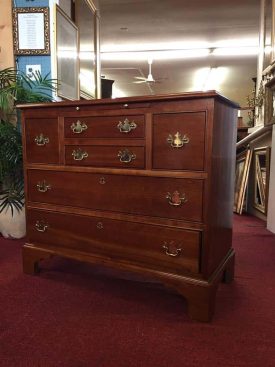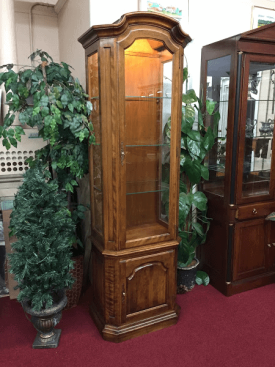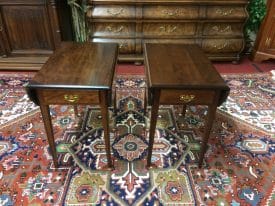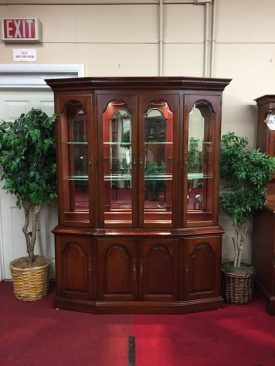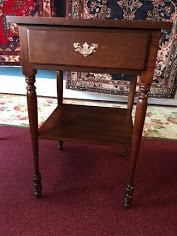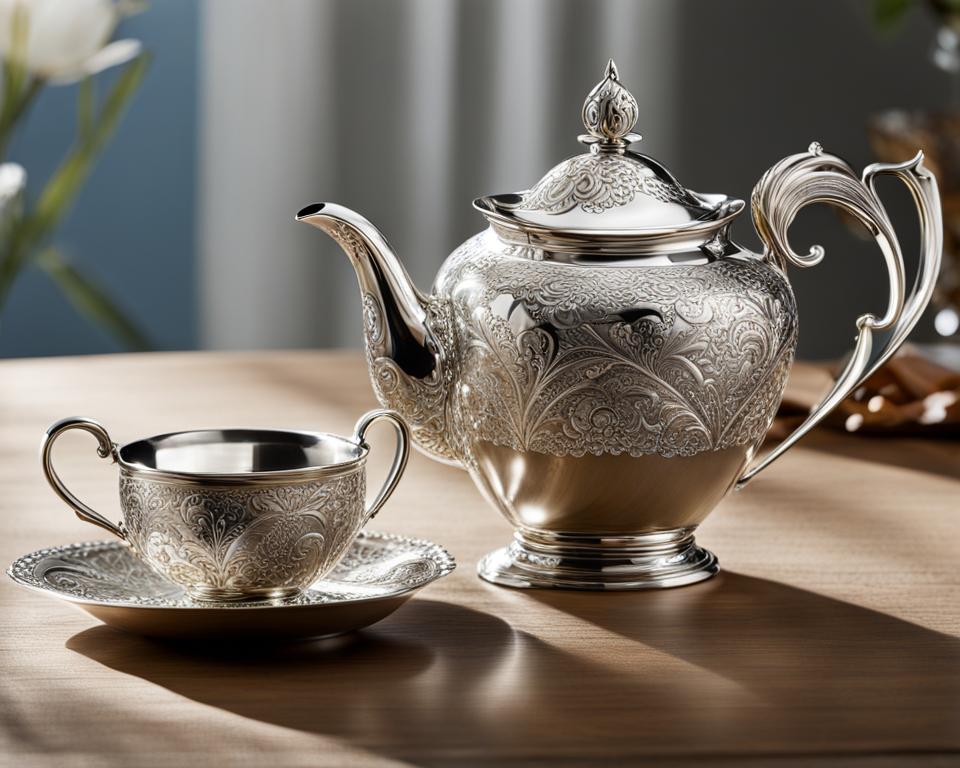Antique furniture is not just a decorative piece; it’s a piece of history and an investment. To ensure the value of your antique furniture remains intact, it’s essential to take proper care and maintenance measures. By following these tips, you can preserve the beauty and value of your antique pieces for years to come.

Antique furniture maintenance involves various aspects, including choosing the right storage location, covering and wrapping the furniture, using proper supports, keeping pests away, and monitoring the environment for potential damage. By paying attention to these details, you can safeguard your antique furniture and maintain its value.
Key Takeaways:
- Choose a dry and safe storage location away from sunlight and extreme temperatures.
- Cover and wrap your antique furniture to protect it from dust and scratches.
- Use proper supports to prevent sagging and damage during storage.
- Take preventive measures to keep pests away from your antique furniture.
- Monitor the storage environment for signs of mold, mildew, or other potential damage.
Choosing the Right Storage Location for Antique Furniture
When it comes to storing antique furniture, the location you choose plays a crucial role in preserving its value. By selecting the ideal storage space, you can safeguard your precious pieces from damage and ensure their longevity.
To begin with, it’s important to find a dry area that is away from direct sunlight. Sunlight can be harmful to antique furniture as it can lead to cracking and fading of the wood. By keeping your furniture in a shaded spot, you can prevent these issues and maintain its original beauty.
Moreover, the storage space should be free from moisture and extreme temperatures. Moisture can cause warping, cracking, and other structural damages to the wood, while extreme temperatures can have similar adverse effects. If possible, consider choosing a location with temperature and humidity control to provide the optimal environment for your antique furniture.
Proper temperature and humidity control are vital in the preservation of antique furniture value. By maintaining a stable and controlled environment, you can prevent the deterioration of your beloved pieces and protect their historical and sentimental worth.
Remember, the right storage location is key to preserving antique furniture value. Choose a dry area away from sunlight and ensure that the space is free from moisture and extreme temperatures. With the correct storage conditions, you can ensure the longevity and beauty of your antique furniture for future generations to appreciate.
| Benefits of Choosing the Right Storage Location |
|---|
| Prevents cracking and fading caused by direct sunlight |
| Protects against warping, cracking, and other structural damages due to moisture |
| Preserves the original beauty and value of antique furniture |
| Ensures the longevity of antique furniture |
Covering and Wrapping Antique Furniture for Protection
To preserve the value of your antique furniture and safeguard it from dust, dirt, and scratches, proper covering and wrapping techniques are essential. By following these steps, you can ensure that your cherished pieces remain in pristine condition for years to come.
1. Use Sheets or Blankets for Covering
Preserving antique furniture value, covering antique furniture
When covering antique furniture, opt for sheets or blankets that are clean and free from any potentially abrasive elements. These protective layers act as a shield, preventing dust buildup and minimizing the risk of scratches.
2. Focus on Legs and Corners for Wrapping
Preserving antique furniture value, wrapping antique furniture
When wrapping your antique furniture, pay special attention to the legs and corners. These areas are more susceptible to accidental bumps and knocks. By providing extra protection, you can safeguard these vulnerable parts and preserve the overall integrity of the furniture.
3. Consider Acid-Free Tissue Paper or Packing Paper
Preserving antique furniture value, wrapping antique furniture
In addition to using sheets or blankets, you can also incorporate acid-free tissue paper or packing paper for added protection. This specialized paper serves as a barrier against scratches and dents, ensuring that your antique furniture remains in pristine condition.
Wrapping your antique furniture with care and precision is an essential step in its preservation. By employing these covering and wrapping techniques, you can safeguard your valuable pieces and enjoy their beauty for generations to come.
Using Proper Supports for Storing Antique Furniture
Preserving antique furniture value involves taking the necessary precautions to protect these valuable pieces from damage. One important aspect of storing antique furniture safely is using proper supports. Placing wooden blocks or foam beneath the legs of the furniture not only provides stability but also helps prevent sagging over time. By supporting the weight evenly, you can ensure the structural integrity of the piece remains intact.
It’s also crucial to elevate the furniture at least 6 inches off the ground to protect it from potential damage. This elevation helps prevent moisture seepage and minimizes the risk of pests inhabiting the storage area. You can achieve this by using plastic pallets or wooden pallets to create a stable and elevated platform for storing antique furniture.
Proper supports not only preserve the value of the furniture but also prevent long-term damage caused by sagging and exposure to unfavorable conditions.
Benefits of Using Proper Supports for Antique Furniture:
- Prevents sagging and structural damage
- Protects the furniture from moisture and pests
- Preserves the value and condition of the piece
| Support Type | Benefits |
|---|---|
| Wooden blocks | Provides stability and prevents sagging |
| Foam | Evenly distributes weight and protects against impact |
| Plastic pallets | Elevates furniture, protects against moisture, and minimizes pest risks |
| Wooden pallets | Creates a stable platform for storing antique furniture |
Using proper supports for storing antique furniture is an essential part of its preservation. By implementing these measures, you can ensure that your valuable pieces remain in excellent condition, maintaining their beauty and value for years to come.
Preventing Pests from Damaging Antique Furniture
Preserving the value of antique furniture goes beyond proper storage and maintenance. It also involves protecting these timeless pieces from damaging pests. Woodworms, termites, and other insects can cause irreversible harm if left unaddressed. By implementing pest prevention measures, you can safeguard your antique furniture and preserve its value for years to come.
Keeping the storage space clean and free from food or crumbs is the first step to deterring pests. These attractants can lure insects and rodents, leading to potential damage. Regularly inspect the storage area for signs of pests, such as droppings, chewed wood, or nests. If any indications are found, take appropriate measures immediately to prevent further infestation.
“The best defense against pests is a proactive approach. Don’t wait until the damage is done to take action.”
To protect your antique furniture from pests, consider the following preventive strategies:
- Seal any cracks or gaps in the storage area to limit access points for pests.
- Use pest-specific deterrents, such as repellents or traps, suitable for the type of pests commonly found in your area.
- Elevate furniture off the ground by using wooden pallets or other supports to create a physical barrier against pests.
- Provide proper ventilation in the storage space to discourage dampness, as moisture attracts pests.
- Consider natural pest control methods, such as cedar chips or sachets, which act as repellents.
Remember, prevention is key when it comes to preserving antique furniture value. By prioritizing pest prevention, you can ensure that your cherished pieces remain protected from harmful infestations, allowing their beauty and historical significance to shine.

| Pest | Prevention Techniques |
|---|---|
| Woodworms | Regularly inspect and treat wooden furniture with appropriate woodworm treatments. Remove any infested pieces from the storage area promptly. |
| Termites | Implement regular termite inspections and treatments by professionals. Keep the storage area dry and well-ventilated to deter termite infestation. |
| Silverfish | Keep the storage space clean and free from food debris. Place adhesive traps or employ natural repellents, such as citrus peels or lavender sachets. |
| Rodents | Seal any entry points to prevent rodents from accessing the storage space. Use bait stations or live traps if necessary. |
Monitoring the Storage Environment for Antique Furniture
Preserving antique furniture value requires regular monitoring of the storage environment to prevent the growth of mold and mildew. These unwanted intruders can cause significant damage to your valuable pieces if left unchecked. By addressing any sources of moisture and ensuring proper air circulation, you can keep mold and mildew at bay.
Signs of Mold and Mildew
It’s essential to be aware of the signs that indicate the presence of mold or mildew in your storage area. Here are a few indicators to watch out for:
- Visible patches or discoloration on the furniture’s surface
- An unpleasant, musty odor
- Softened or decaying wood
If you notice any of these signs, it’s crucial to take immediate action to prevent further damage to your antique furniture.
Addressing Sources of Moisture
Mold and mildew thrive in damp environments, making it essential to address any sources of moisture in your storage area. Check for leaks or water damage in the surrounding walls or ceiling. Fixing these issues promptly can help maintain a dry environment, preventing the growth of mold and mildew.
Ensuring Proper Air Circulation
Adequate air circulation is another crucial factor in preventing the growth of mold and mildew. Make sure there is sufficient space between furniture pieces, allowing for proper airflow. Avoid overcrowding the storage area, as it can lead to trapped moisture and increased humidity levels. Additionally, consider using dehumidifiers or fans to improve air circulation, especially in areas prone to high humidity.
To better understand the importance of monitoring the storage environment for antique furniture, refer to the table below:
| Benefits of Monitoring the Storage Environment | Actions Required |
|---|---|
| Prevents mold and mildew growth | Regularly inspect for signs of mold and mildew Address any sources of moisture immediately Ensure proper air circulation |
| Safeguards against furniture damage | Monitor humidity levels Maintain optimal temperature range Avoid storing antique furniture in damp areas |
| Prolongs the lifespan of antique furniture | Regularly clean and dust your furniture Keep storage area clean and free from debris |
Expert Tip: Regular Checkups
“To ensure the long-term preservation of your antique furniture, perform regular checkups of the storage environment. By monitoring for mold and mildew and taking necessary precautions, you can maintain the value and integrity of your valuable pieces for generations to come.”
Expert Techniques for Restoring Vintage Furniture
Vintage furniture is not only cherished for its aesthetic appeal but also for its historical significance. To preserve its beauty and maintain its value, it’s essential to restore vintage furniture using expert techniques. This involves a meticulous approach that addresses both the structural integrity and surface imperfections of the furniture.
Assessing the structural integrity of vintage furniture is crucial before starting the restoration process. Inspect the joints, legs, and other supporting elements to ensure they are stable and secure. If any repairs are needed, enlist the help of a professional carpenter or restoration specialist.
Addressing surface imperfections and damage is another important step in restoring vintage furniture. Begin by gently cleaning the surfaces using a mild dish soap and warm water solution. Avoid using harsh chemicals or abrasive cleaners that can damage the wood’s delicate finish. Use a soft cloth or sponge to wipe the surfaces along the grain, and promptly dry them with a clean cloth to prevent moisture damage.
Expert Tip: For stubborn stains or discoloration, try using a mixture of white vinegar and water. Test the solution on a small, inconspicuous area first to ensure it doesn’t cause any damage.
Equipping yourself with the right tools and materials is essential for a successful vintage furniture restoration. Depending on the specific needs of your furniture, you may require items such as wood fillers, sandpaper, masking tape, brushes, and varnishes. Consult with experts or restoration guides to determine the best products for your particular project.
Setting up a Dedicated Workspace
Creating a dedicated workspace for vintage furniture restoration is vital for efficiency and organization. Set up a well-lit area with ample space to work on multiple pieces simultaneously if needed. Keep your tools, materials, and cleaning supplies easily accessible for convenience.
Prioritizing Safety
When restoring vintage furniture, prioritize your safety by wearing protective equipment such as gloves, goggles, and a mask. Some old furniture may have been treated with potentially harmful substances, so taking precautions is essential.
Gentle Cleaning Techniques
Using gentle cleaning techniques is crucial to avoid causing further damage to vintage furniture. Avoid scrubbing vigorously or using abrasive materials that can scratch or strip the wood. Instead, opt for soft brushes or cloths that won’t harm the delicate surfaces.
Remember, vintage furniture restoration requires patience and attention to detail. Take your time and approach each piece with care, ensuring that you preserve its original features and unique character.

| Expert Techniques for Restoring Vintage Furniture |
|---|
| Assess the structural integrity of the furniture |
| Address surface imperfections and damage |
| Equip yourself with the right tools and materials |
| Create a dedicated workspace |
| Prioritize safety |
| Use gentle cleaning techniques |
Proper Care and Maintenance of Vintage Furniture Finishes
Preserving the beauty and value of vintage furniture relies on proper care and maintenance of its finishes. By adopting the right practices, you can protect the wood and ensure the longevity of these cherished pieces. Follow these tips to care for your vintage furniture finishes and safeguard their aesthetic appeal:
- Avoid Harsh Chemicals and Abrasive Cleaners
Preserving antique furniture value requires steering clear of harsh chemicals and abrasive cleaners that can strip away the natural oils and damage the delicate wood finishes. Instead, opt for a gentle approach by using a solution of mild dish soap and warm water. This mild mixture effectively removes dirt and grime without causing harm to the finishes. Apply the solution with a soft cloth or sponge to ensure a gentle clean.
- Gently Wipe Along the Grain
When cleaning vintage furniture, caring for vintage furniture finishes involves wiping the surface gently along the direction of the wood grain. This method helps to preserve the integrity of the finish and minimize the risk of scratches or other damage. Remember to use a soft cloth or sponge to avoid rough materials that may impact the delicate surface of the wood.
- Dry Immediately and Thoroughly
One crucial step in protecting wood finishes is preventing moisture damage. After cleaning with the soapy solution, ensure that you dry the furniture immediately and thoroughly using a clean cloth. Moisture left on the surface can seep into the wood and cause warping or other forms of damage. By promptly drying the furniture, you maintain its structural stability and preserve the beauty of the vintage finishes.
By adopting these practices, you can preserve antique furniture value and prolong the life of your precious vintage pieces. Proper care and maintenance of the finishes not only protect the wood but also enhance the overall aesthetic appeal of the furniture.
Conclusion: Preserving Antique Furniture Value
Preserving the value of antique furniture is essential for maintaining the beauty and historical significance of these precious pieces. By implementing proper storage, maintenance, and restoration techniques, you can ensure that your antique furniture remains in excellent condition for years to come.
Choosing the right storage location is the first step in preserving antique furniture value. Select a dry area away from direct sunlight to prevent cracking and fading. Ensure the storage space is free from moisture and extreme temperatures, as these can cause warping and other structural damages to the wood.
Covering and wrapping antique furniture provides protection against dust, dirt, and scratches. Use sheets or blankets to cover the furniture and focus on wrapping the legs and corners for extra safeguarding. Acid-free tissue paper or packing paper can also be used to prevent scratches and dents.
Using proper supports when storing antique furniture is crucial. Place wooden blocks or foam beneath the legs to prevent sagging and elevate the furniture at least 6 inches off the ground. Plastic or wooden pallets can serve as sturdy supports.
Keeping pests at bay is vital in maintaining antique pieces. Ensure the storage space is clean and free from food or crumbs that may attract pests. Regularly inspect the area for signs of infestations and take appropriate measures to prevent damage caused by woodworms, termites, and other pests.
Monitoring the storage environment is equally important. Regularly check for mold or mildew, and address any sources of moisture promptly. Proper air circulation helps prevent the growth of mold and mildew, which can harm antique furniture.
When it comes to restoring vintage furniture, expert techniques are essential. Assess the structural integrity of the furniture and address any surface imperfections or damage. Create a dedicated workspace and prioritize safety throughout the restoration process.
Caring for vintage furniture finishes is crucial in preserving their beauty. Avoid using harsh chemicals and abrasive cleaners that can strip the wood’s natural oils and damage the finish. Instead, use a solution of mild dish soap and warm water applied with a soft cloth or sponge. Gently wipe the surface along the grain and dry it immediately with a clean cloth to prevent moisture damage.
By following these antique furniture preservation techniques and regularly maintaining your pieces, you can ensure that their value and beauty survive the test of time. Preserve, cherish, and enjoy these cherished pieces of history for generations to come.
FAQ
How can I preserve the value of my antique furniture?
To preserve the value of your antique furniture, it is important to store it in a dry area away from direct sunlight. You should also choose a storage space that is free from moisture and extreme temperatures. Additionally, cover and wrap your furniture to protect it from dust and scratches, use proper supports to prevent sagging, keep pests away, and monitor the storage environment for potential damage.
What should I consider when choosing a storage location for my antique furniture?
When choosing a storage location for your antique furniture, it is recommended to select a dry area away from direct sunlight. This helps prevent cracking and fading. The storage space should also be free from moisture and extreme temperatures. If possible, consider a storage space with temperature and humidity control to prevent warping and cracking.
How should I cover and wrap my antique furniture for protection?
To protect your antique furniture from dust, dirt, and scratches, cover it with sheets or blankets. Focus on wrapping the legs and corners to provide extra protection. You can also use acid-free tissue paper or packing paper to prevent scratches and dents.
What are proper supports for storing antique furniture?
It is important to place wooden blocks or foam beneath the legs of your antique furniture to provide support and prevent sagging. Make sure to store the furniture at least 6 inches off the ground to protect it from potential damage. Plastic pallets or wooden pallets can be used as supports for storing antique furniture.
How can I prevent pests from damaging my antique furniture?
To prevent pests from damaging your antique furniture, keep the storage space clean and free from food or crumbs that can attract them. Regularly check the storage area for signs of pests and take appropriate measures if necessary. This helps prevent damage caused by pests such as woodworms and termites.
What should I do to monitor the storage environment for my antique furniture?
Regularly check the storage area for signs of mold or mildew, as these can cause damage to your antique furniture. If mold or mildew is found, take immediate action to remedy the situation. This includes addressing any sources of moisture and ensuring proper air circulation in the storage space.
What are some expert techniques for restoring vintage furniture?
Restoring vintage furniture requires assessing the structural integrity, addressing surface imperfections and damage, and equipping yourself with the right tools and materials. It is important to set up a dedicated workspace, prioritize safety, and use gentle cleaning techniques. Expert techniques can include re-gluing loose joints, repairing veneer, and refinishing the wood.
How should I care for and maintain vintage furniture finishes?
To care for vintage furniture finishes, it is recommended to avoid harsh chemicals and abrasive cleaners that can strip the wood’s natural oils and damage the finish. Instead, use a solution of mild dish soap and warm water applied with a soft cloth or sponge. Gently wipe the surface along the grain and immediately dry with a clean cloth to prevent moisture damage.
How can I preserve the value of my antique furniture?
By following the tips mentioned above, such as choosing the right storage location, covering and wrapping the furniture, using proper supports, keeping pests away, and monitoring the environment, you can effectively preserve the value of your antique furniture. Additionally, practicing expert techniques for vintage furniture restoration, proper care for vintage furniture finishes, and regular maintenance will help preserve the value and beauty of these precious pieces for years to come.

